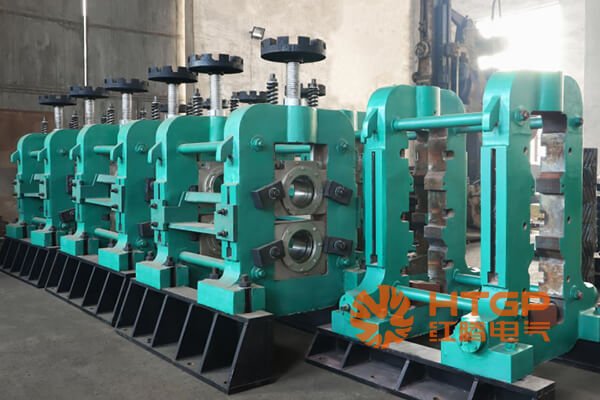Aluminum melting furnace
The melting point of aluminum is 660.37℃. Under standard atmospheric pressure, when aluminum is completely melted, the temperature will continue to rise. Hongteng hot rolling mill stand
The post-processing of aluminum after melting will vary depending on the specific needs and application scenarios. The following are some common processing steps and methods:
Refining: The purpose is to remove gas and non-metallic inclusions in the aluminum liquid and to uniform the alloy composition. Refining agents are usually used, added to the aluminum liquid, and stirred with tools to make the refining agent fully contact with the aluminum liquid to achieve the effect of removing impurities and gases. The refining temperature is generally controlled at 700-720℃.
Composition adjustment: Detect the chemical composition of the aluminum liquid and add the corresponding alloy elements as needed to adjust the composition of the aluminum liquid to meet the specific alloy requirements. 3. Modification treatment: If it is a cast aluminum alloy, it may be necessary to perform modification treatment to refine the grains and improve the performance of the casting. The modifier should be preheated first, the modification temperature generally does not exceed 740℃, the modification time is usually about 10 minutes, and the amount of modifier added is about 1.0%-1.2% of the mass of the alloy liquid. Pay attention to the method during operation to ensure that the modifier is evenly dispersed in the aluminum liquid. 4. Degassing: Further remove the dissolved gas in the aluminum liquid to reduce the porosity defects in the casting. Common methods include flotation method, vacuum treatment, etc. 5. Filtration: Remove the tiny inclusions remaining in the aluminum liquid by filtering to improve the purity of the aluminum liquid. Filtration equipment such as foam ceramic filter plates can be used. 6. Pouring: Pour the treated aluminum liquid into the mold to make the required castings or products. The pouring process should be rapid to avoid excessive temperature drop of the aluminum liquid or absorption of too much gas.
When handling aluminum liquid, the temperature, time and operation process need to be strictly controlled to ensure high-quality aluminum products. At the same time, operators should pay attention to safety and take appropriate protective measures to avoid burns caused by aluminum liquid splashing. In addition, different aluminum alloys may have specific processing requirements and process parameters, and the specific processing methods need to be adjusted and optimized according to actual conditions.
